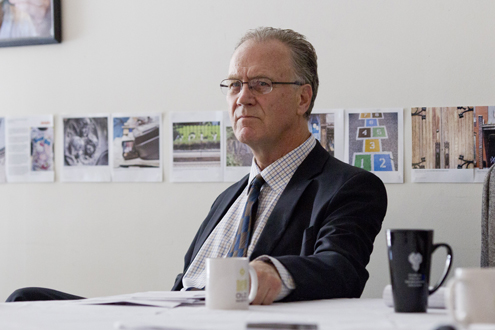
Todd Swanstrom is the E. Desmond Lee Endowed Professor of Community Collaboration and Public Policy Administration at UMSL. (Photo by August Jennewein)
St. Louis may face its share of challenges, but the city is no Detroit, according to a recent article by St. Louis Post-Dispatch business columnist David Nicklaus. Detroit now owns the distinction of being the largest U.S. city ever to file for bankruptcy. How has St. Louis avoided wandering down a similar path of economic collapse?
“Partly, it’s a question of diversity in the economy,” Todd Swanstrom, the E. Desmond Lee Endowed Professor of Community Collaboration and Public Policy Administration at the University of Missouri–St. Louis, told the Post-Dispatch. “(Detroit) put more of their eggs into one basket (the automotive industry).”
Nicklaus pointed out in his article that Detroit’s viability hinged on the success of the Big Three automakers, Ford, General Motors and Chrysler. Swanstrom added that pre-auto-era cities like St. Louis prove more adaptable than those built for the automobile.
“St. Louis has these older bones, a little more density with some walkability built in,” Swanstrom told the Post-Dispatch. “I think that’s an advantage, because if you’re competing with the suburbs you’re going to lose.”
Swanstrom, who holds a joint appointment with the Public Policy Research Center, Public Policy Administration program and Department of Political Science, splits his time between the classroom and working in the community on applied policy research. He has written six books including “Place Matters: Metropolitics for the Twenty-first Century” and is a member of the MacArthur Foundation’s Research Network on Building Resilient Regions. Through Swanstrom’s endowed professorship, he has helped form the Community Builders Network of Metro St. Louis, an association of community-building nonprofit organizations devoted to building vibrant neighborhoods.
Visit STLtoday.com to read the full St. Louis Post-Dispatch article.














